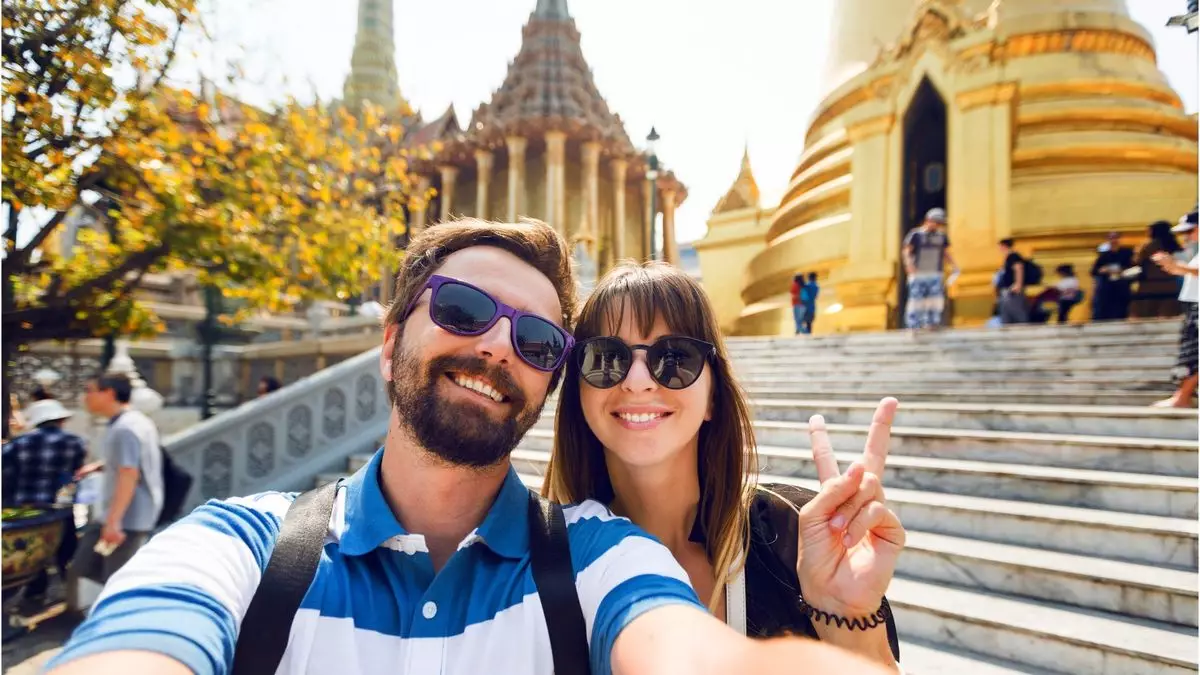Angkor Wat, a quintessential emblem of Cambodia, remains an awe-inspiring religious complex dating back to the 12th century. Revered as a UNESCO World Heritage site, it attracts not only pilgrims but also enthusiastic travelers eager to absorb its rich cultural tapestry. However, in a post-pandemic world, Angkor Wat’s fame beckons visitors from far and wide, particularly for breathtaking sunrises at the iconic temple. Yet, the anticipated influx of Asian travelers has been hindered significantly, resulting in a curious dichotomy: while Western visitors find their experiences less congested, the complex struggles to recover to its former glory.
As the marketing director of Red Savannah, Sarah-Leigh Shenton, pointed out, ticket sales to Angkor Wat currently languish at just 45% of pre-pandemic figures. This downturn primarily stems from the absence of tourists from China, Japan, and Korea—each historically significant contributors to the site’s visitor numbers. The slow recovery of Asian markets is not merely a fleeting issue; it stems from a complex interplay of factors, including economic instability and the lingering effects of travel restrictions.
The Asian Tourist Exodus: Turning Inward
The travel patterns of Asian tourists tell a complex story. Countries like Japan and South Korea, which normally send large contingents abroad, have seen these numbers dwindle as domestic travel options and economic challenges dominate their priorities. Chinese tourists, once the most prominent travelers in the region, are also rerouting their interests closer to home, showing increased bookings within Asia rather than venturing to far-flung destinations. According to DidaTravel, the surge in outbound bookings from China to Japan has only partially compensated for the sharp decline in overall travel volume, indicating that the trend observed is more localized than global.
Notably, the ongoing volatility of national currencies impacts travel behaviors as well. The Japanese yen’s depreciated status weighs heavily on international travel decisions, making it prohibitively expensive for its citizens to explore beyond their borders. The conundrum is further amplified by the push and pull of local economies, where many prefer to spend less for domestic experiences rather than indulge in overseas adventures.
Despite the challenges facing traditional routes, opportunities abound for those willing to pivot in the face of adversity. Regions like Southeast Asia, inclusive of Cambodia and Vietnam, are attracting significant attention from Western tourists eager to explore these burgeoning destinations. Travel suppliers focusing on English-speaking markets have reported a remarkable upsurge in bookings, particularly to Japan and adjacent countries. Alexander + Roberts revealed that travel to Asia in 2024 is projected to rise by an astonishing 41% when compared with the previous year, with Japan, Vietnam, and Thailand leading the charge.
Luxury travel firms also underscore this shift, with prominent players reporting substantial demand for destinations like Cambodia, Laos, and Indonesia as travelers seek more widespread exploration across Asia. Remote Lands, a specialist in high-end Asian travel, highlighted that Japan alone constitutes a third of its business, highlighting a shift to multi-destination packages that allow travelers to experience diverse cultures and landscapes within the same trip.
The evolving habits of travelers post-pandemic reveal a noteworthy trend: the desire for varied experiences rather than simply visiting a single destination. Travel agencies are reporting a growing inclination among tourists to book back-to-back packages in Asia, allowing them to immerse themselves fully in multiple cultures on their journeys. As travelers reframe their perspectives on holidaying, it has become increasingly common to witness combinations such as Vietnam and Cambodia, or Japan and Korea, in single itineraries. This desire for richer, more diverse experiences indicates a transformation in traveler attitudes and expectations in the face of changing global dynamics.
The future of Asian travel initiatives hinges on how well the industry adapts to these changing conditions. While the need for flexibility has become core to travelers’ planning, the ongoing economic fluctuations, coupled with the ramifications of currency devaluation and geopolitical factors, continue to pose substantial hurdles.
As the global travel landscape continues to evolve, one must remain optimistic but cautious. The resilience of the travel industry, particularly in Asia, may ultimately depend on its ability to embrace innovation, while also catering to the changing preferences of a diverse traveler demographic. If successful, Asia may once again reclaim its rightful position as a premier travel destination, attracting explorers from every corner of the globe.

